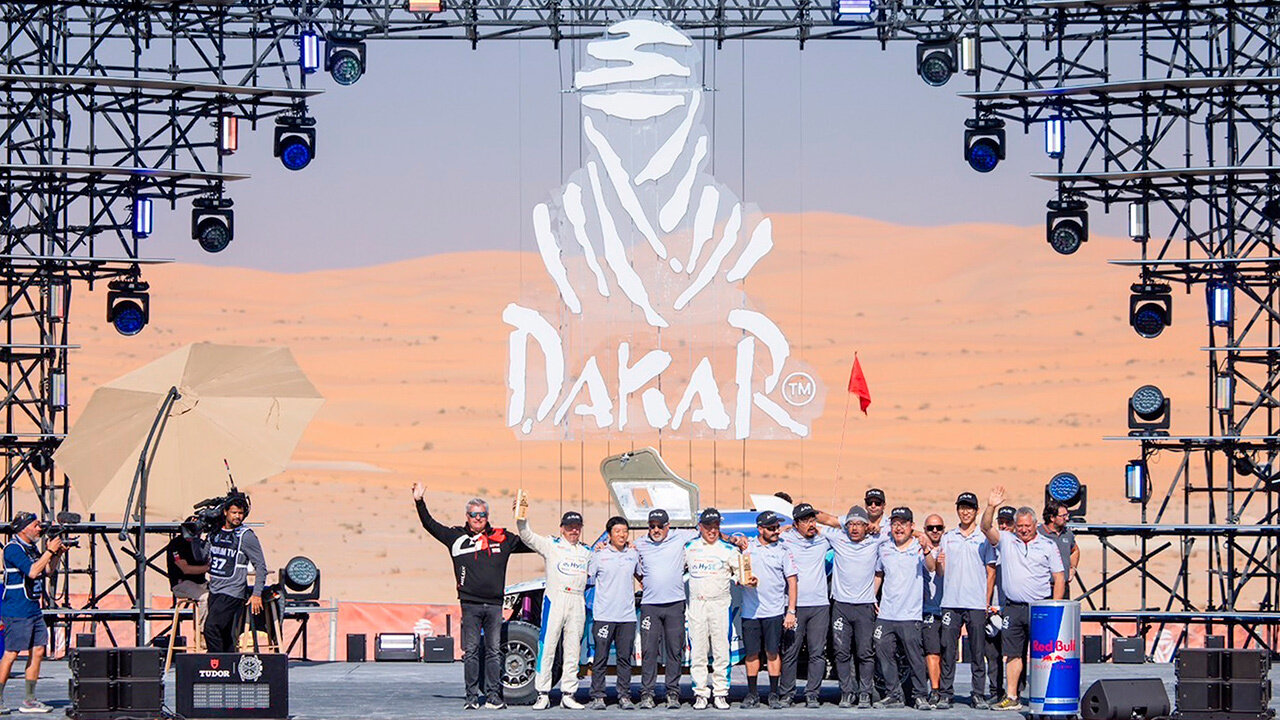
For the second year running, HySE, a technical research association including Toyota and four Japanese motorcycle manufacturers, has competed in the Dakar Rally with a hydrogen engine buggy, which finished second in its class. How has the vehicle evolved, and what challenges lie ahead?

HySE (Hydrogen Small mobility & Engine technology) is a technical research association whose members include four motorcycle manufacturers—Kawasaki Motors, Ltd. (Kawasaki Motors), Suzuki Motor Corporation (Suzuki), Honda Motor Co., Ltd. (Honda), and Yamaha Motor Co., Ltd. (Yamaha Motor)—along with Kawasaki Heavy Industries, Denso, and Toyota Motor Corporation.
This consortium is seeking to establish fundamental hydrogen engine technologies for motorcycles, small cars, and other forms of small mobility on the way to creating a carbon-neutral society.
As part of these efforts, for the second year in a row, HySE has competed in the Dakar Rally, whose unforgiving environment of deserts, swamplands, and mountains has earned it a reputation as the world’s toughest race.
The challenge gets tougher in 2025
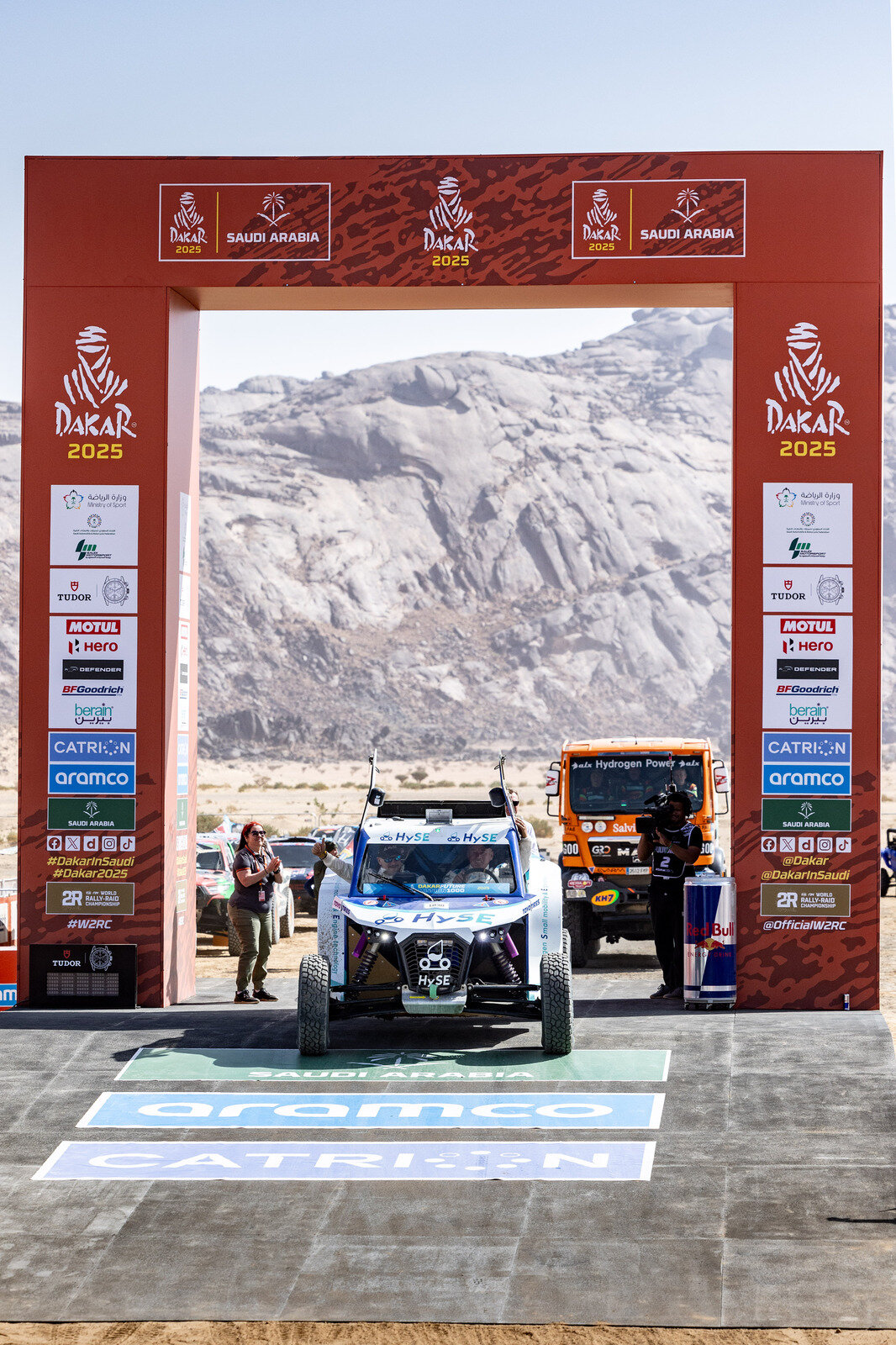
The HySE team entered in Mission 1000, a special category set up in 2024 to promote the development of next-generation powertrains, including hydrogen-powered engines, BEVs, biofuel vehicles, and other decarbonization technologies. As the name suggests, the race covers some 100 km a day for a total of approximately 1,000 km. While the distance may be shorter than in regular categories, the conditions are just as brutal.
Last year, HySE took on Dakar 2024 with the HySE-X1 hydrogen-powered buggy, which completed the race fourth in its class. We shared their journey on Toyota Times.
For Dakar 2025, held between January 3 and 17, the team fielded the improved HySE-X2. Despite harsher conditions, HySE managed a great result, jumping up two spots from the previous year to finish second in the class.
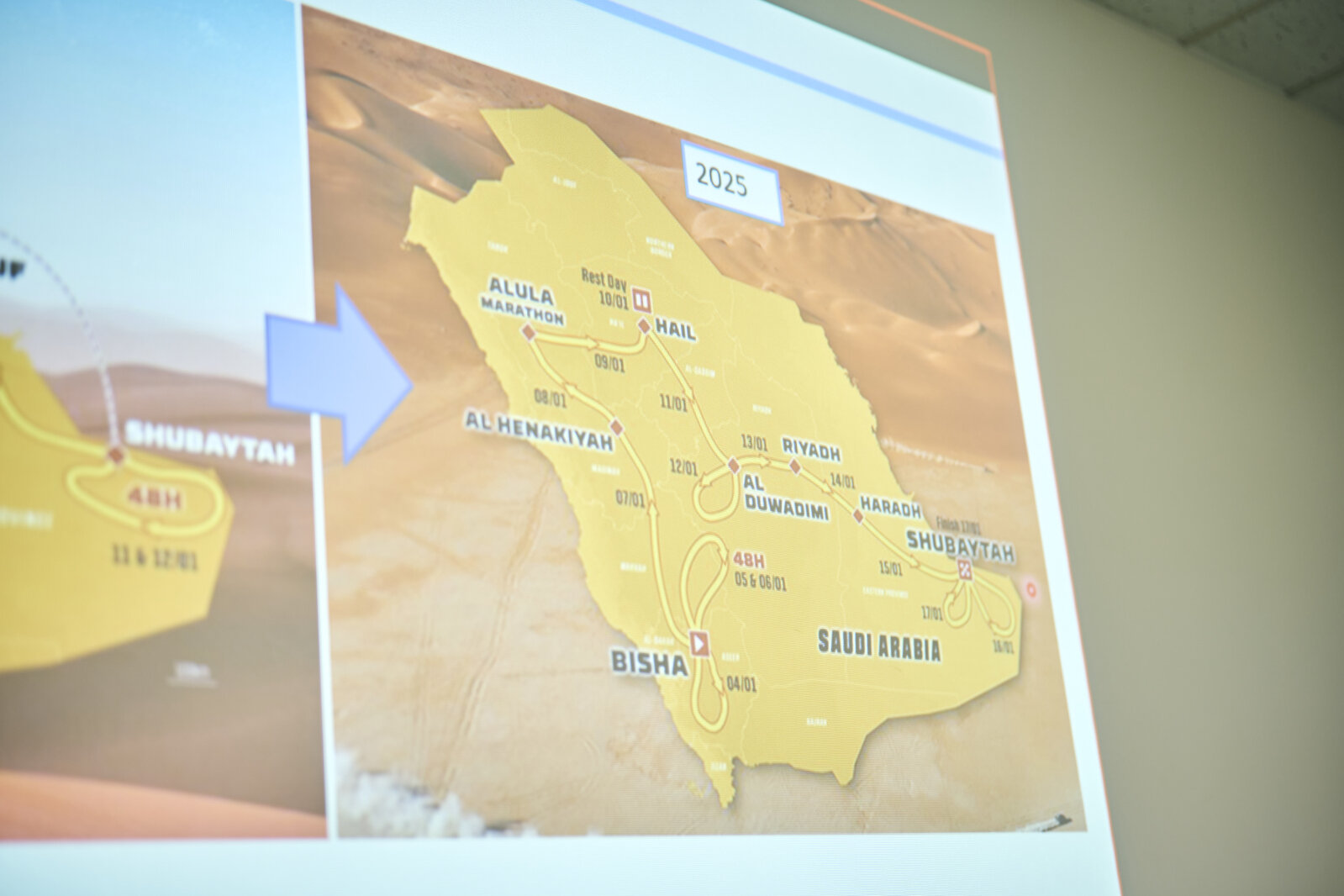
The fact that the HySE-X2 completed 100% of the set course deserves special mention. It was the only vehicle in its class to do so—not even the winning team managed the full distance (under Dakar Rally regulations, any team that covers at least 70% of the course is deemed to have successfully finished). Even after completing 90% in 2024, this year’s effort marked a significant achievement.
Having led the team, Daichi Kai (Suzuki) spoke to us about the hardships of this year’s Dakar.
Team Leader Kai

This Dakar course was about 230 km longer than last year’s, and the conditions were more grueling. Last year, roughly half of the stages were under 70 km, which made them relatively easy to complete, but this time, most were over 90 km. I think drawing on our experience from last year is what enabled us to finish second in these circumstances.
After a total distance of 925 km in its first race, the HySE team covered 1,120.17 km in 2025. The number of stages had increased, and many of these were 90 km or longer. Though forced to race under more difficult conditions than last year, the team’s outstanding result was proof of their technological progress.
Yet behind this strong performance lies a great deal of struggle. During test runs immediately after arriving on location, HySE experienced back-to-back engine failures. Toshitaka Fujiki (Yamaha), who was responsible for engine calibration, recalls the tense situation that unfolded.
Fujiki
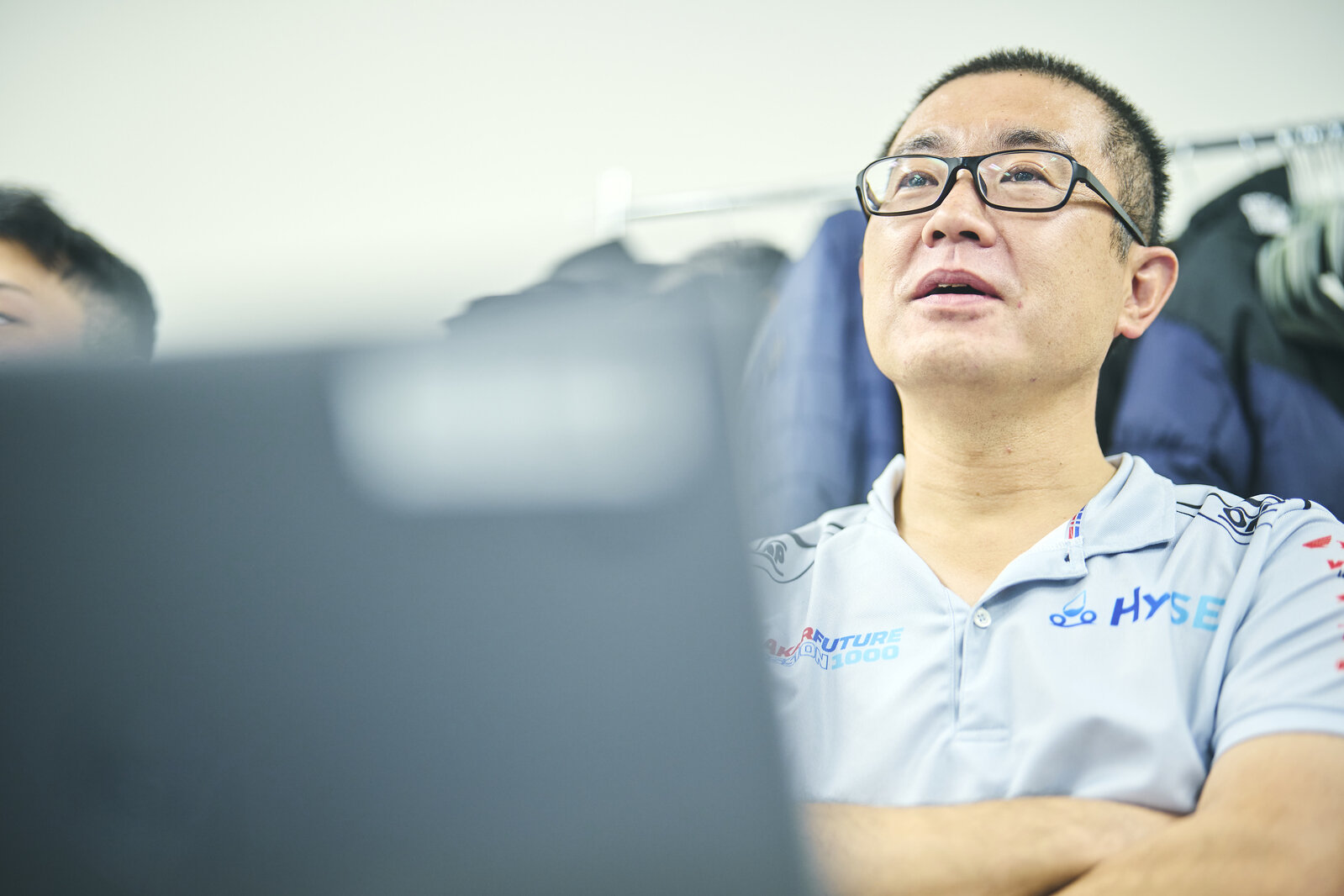
One on the first day of testing, another on the second—all of a sudden, we had wrecked two of our three engines, and if we damaged the third, we would have to pull out of the race. The schedule was such that by the time we mounted the third engine, we couldn’t test it and went straight into the prologue run (a contest to determine the running order for the first stage). This made for a nerve-racking start. When we safely crossed the line, I teared up with emotion and relief.
What happened to the engines?
As to what caused the engine failures, Fujiki pointed out some differences from last year.
Fujiki
Last year, we had swung considerably toward the safe side with our settings, so we couldn’t actually get to the point where technical issues arise. But this year, we really pushed things right up to the line, which brought those issues to the forefront.
Masataka Hirano (Kawasaki Motors) also worked on engine calibration. He broke down the specific causes for us.
Hirano
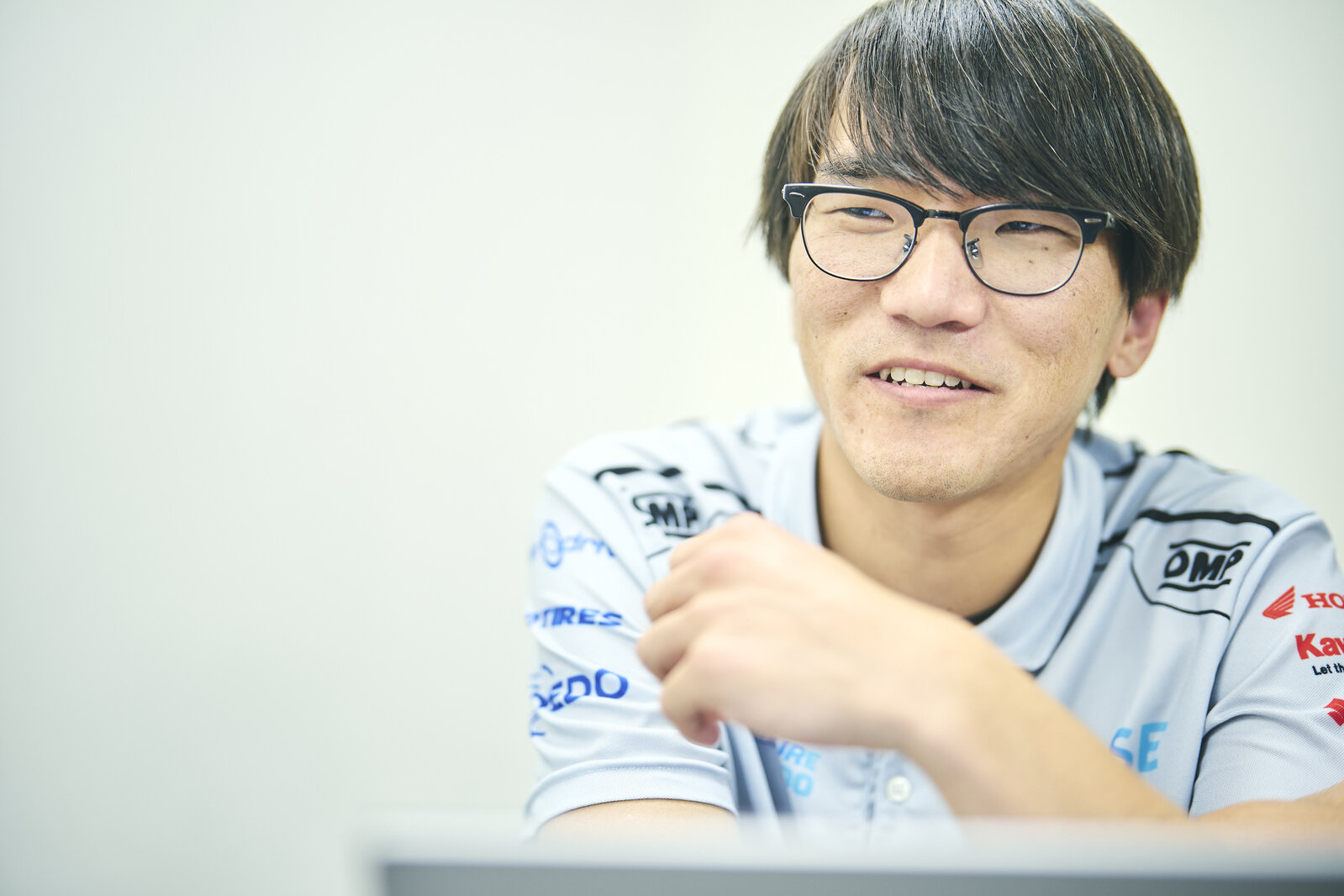
The first engine was damaged because the ratio of hydrogen to air in the mixture was too high, causing abnormal combustion in the combustion chamber. Our second engine failure was caused by the ignition timing being set too early, which likewise resulted in abnormal combustion.
In Fujiki and Hirano’s diagnosis, the root cause of both problems was that the control system had failed to adequately compensate for the drop in atmospheric pressure at higher altitudes. As an urgent fix, for the third engine the calibration team adjusted the values manually and thankfully managed to avoid further problems.
Confronting the challenges of hydrogen engines
Broadly speaking, the HySE-X2 highlighted three technical challenges. First, as outlined above, there is the problem of compensating for atmospheric pressure. Although the team had pushed the limits in testing on low-lying terrain and calibrated the engine to curb abnormal combustion, they had lacked the time to test at high altitude. Since air becomes thinner at higher altitudes, the amount of hydrogen being injected must be adjusted accordingly. Unfortunately, the current system could not make the necessary correction, leading to abnormal combustion that damaged two engines in pre-race tests. For the main event, the adjustment had to be made manually.
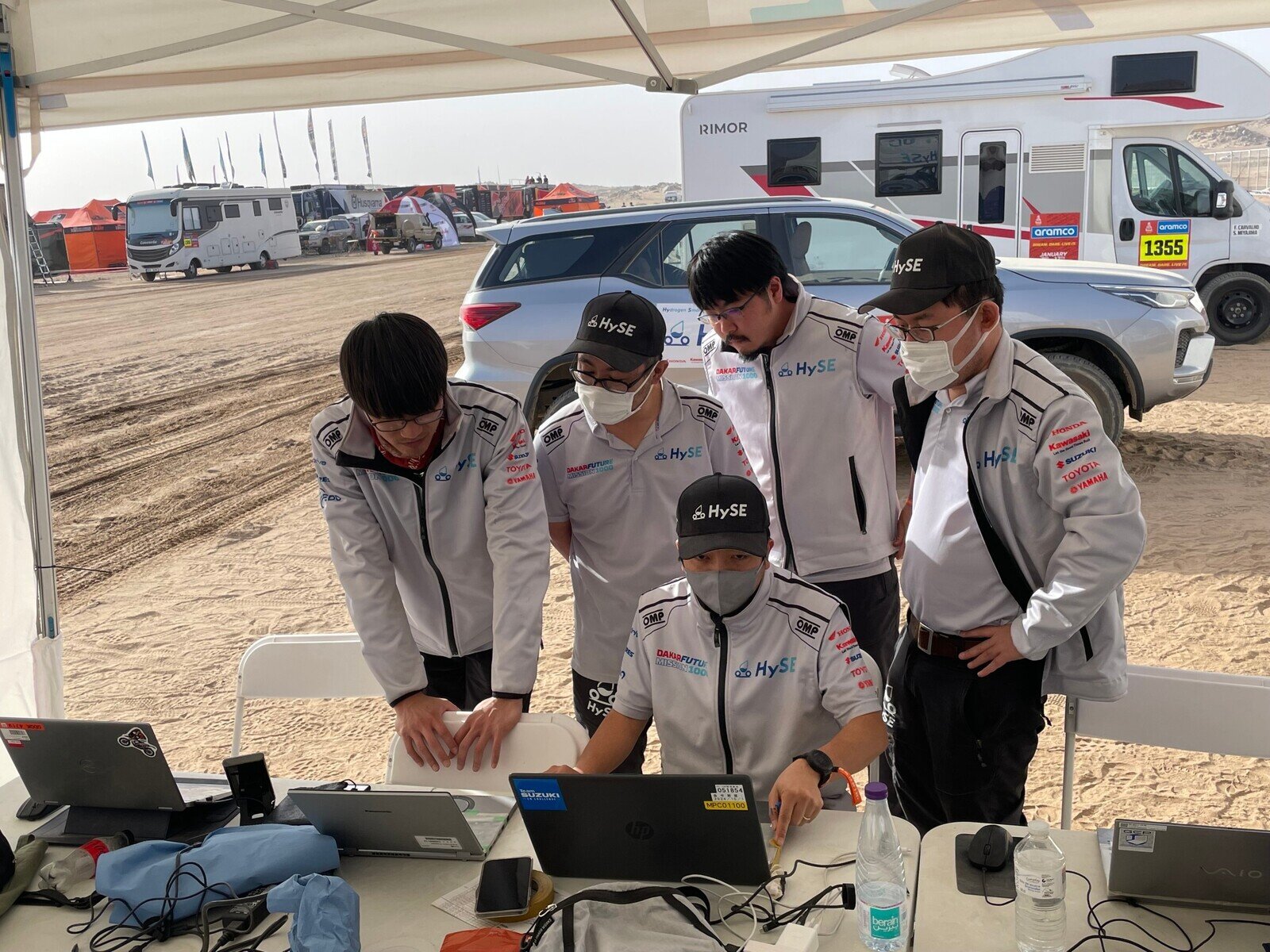
The second issue was control problems caused by drops in the tank temperature. Team Leader Daichi Kai explained the phenomenon with detailed data.
Team Leader Kai
We had a situation where the buggy was running at full throttle for two minutes without slowing down, and the tank temperature fell by 8°C. Under Dakar conditions, we calculate that the engine would hit its torque limit after about ten minutes at full throttle.
The hydrogen is stored in high-pressure tanks, and running continually at full throttle triggers a phenomenon similar to adiabatic expansion, causing the temperature inside these tanks to plunge. To prevent the temperature dropping below the tank operating limit and ensure safety, the engine is equipped with a function that automatically restricts torque. In a grueling race like Dakar, having restrictions kick in after ten minutes became a major strategic hurdle.
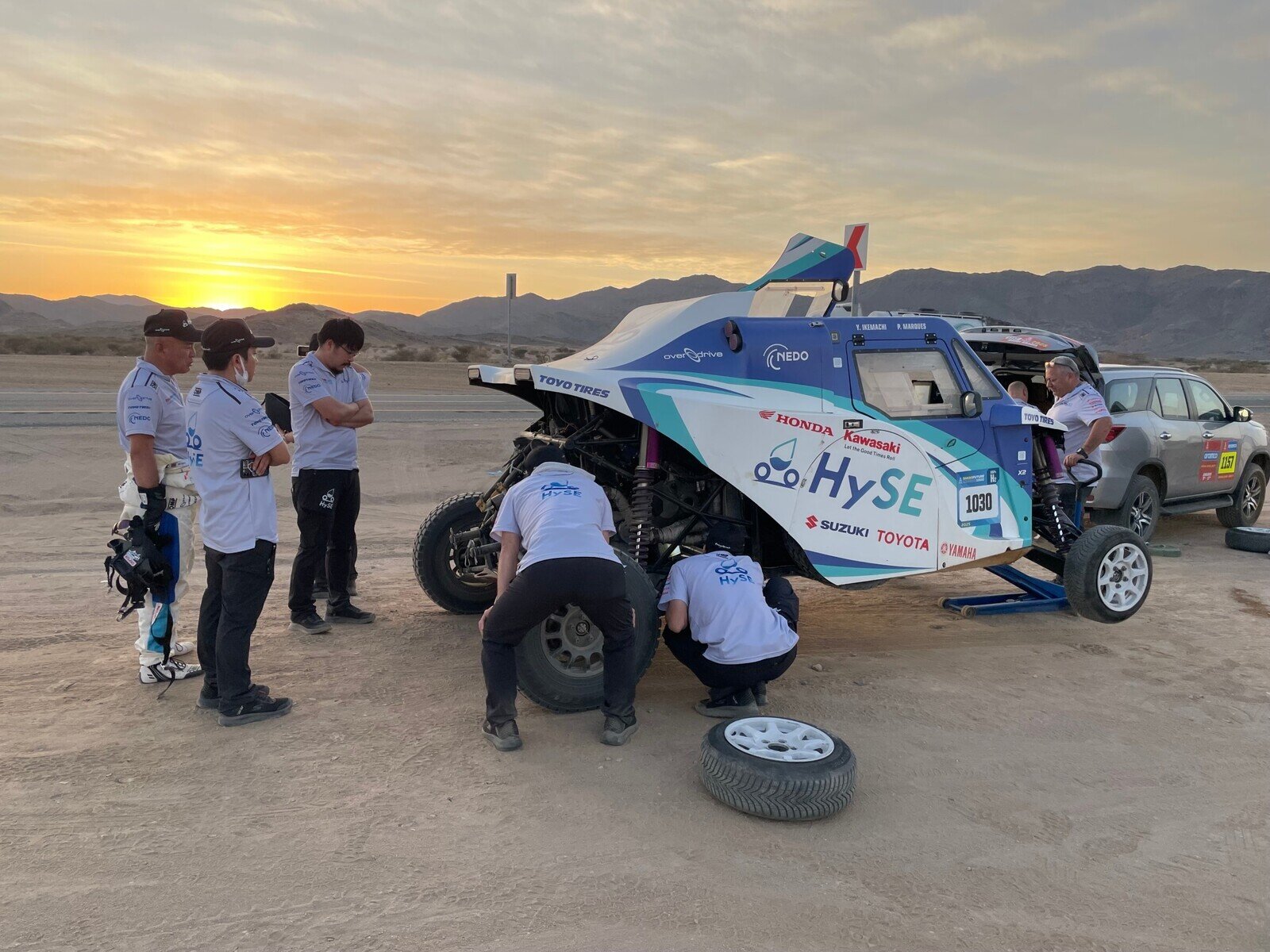
The third technical challenge is boosting range. Many of this year’s stages were longer than 90 km, constantly testing the balance between fuel efficiency and power. The team had to meticulously plan out the buggy’s fuel consumption to suit the conditions for each stage, while also being strategic in their driving, which sometimes meant running at full throttle only for the final 5 km to conserve fuel.
Major performance upgrades
At the same time, by drawing on their experience from last year, the team succeeded in drastically boosting the hydrogen engine’s performance. Team Leader Kai listed some specific areas of improvement.
Team Leader Kai
Last year, the exhaust gases emitted while idling contained high concentrations of hydrogen, but with better controls this year saw a significant reduction, which also improves safety.
On top of that, we took various steps to reach higher revs, and as a result, the engine can now operate at up to 11,500 RPM. Even the abnormal combustion issues have been largely resolved—with the accelerator opening at 60% or above, the frequency has fallen from 0.32% last year to 0.16%.
The improvements in driving performance were similarly remarkable. Last year the focus was fuel efficiency, which meant that both engine output and accelerator opening were limited to around 40%; this year the buggy mostly stayed above 60%, consistently running with the accelerator more than half open and even hitting full throttle for around 10% of the race. As a result, the top speed in each stage also rose by some 20 km/h.
Yoshio Ikemachi is a veteran driver who has competed in Dakar both on two wheels and four. After piloting the HySE-X2 through this year’s event, he was impressed by how well the hydrogen engine buggy performed.
Ikemachi
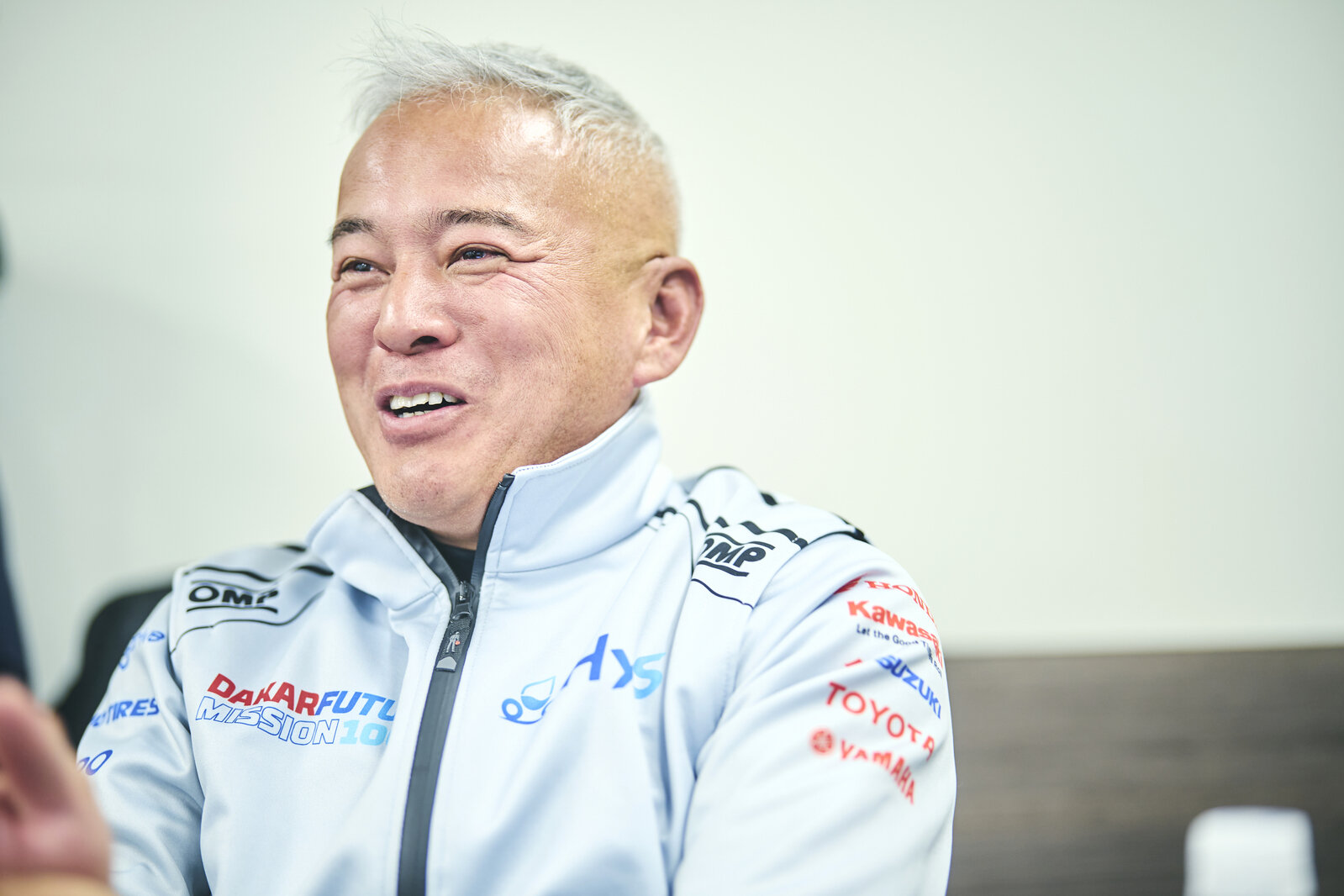
I figured the hydrogen engine wouldn’t have much power, but to my surprise it was a lot more powerful than I had imagined. The engine has a wonderful high-pitched howl that makes you want to open up the throttle and let it rip.
At a ceremony presenting the top teams from each class, we were among the first to be introduced, and when we revved the engine, there was a huge cheer from the crowd. I could see how much excitement there is around hydrogen engines.
Deputy Project Leader Masaaki Ichikawa (Toyota) was also captivated by the hydrogen engine’s distinctive sound.
Deputy Project Leader Ichikawa
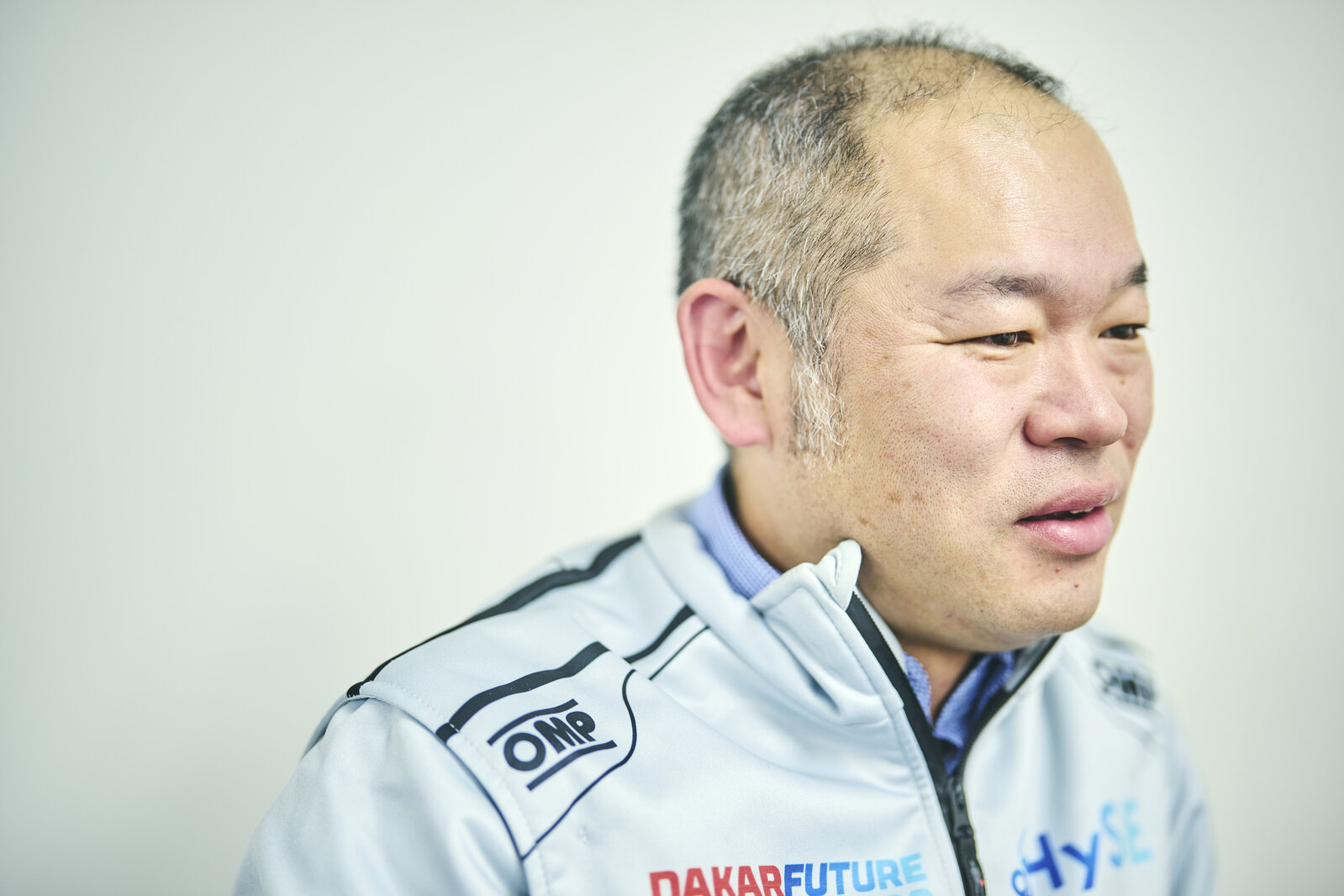
Even after the HySE-X2 set off and disappeared out of sight, for the next five minutes or so we could hear the roar of its engine across the desert. And all it emits is water vapor. It really made a striking impression.
Growing through adversity
Part of HySE’s original purpose in taking on the Dakar Rally was to develop personnel. Indeed, the engineers and other staff who were there for the event learned a great deal from the arduous experience. Shohei Miyajima (Honda), part of the engine control team, felt that the project broadened his horizons.
Miyajima
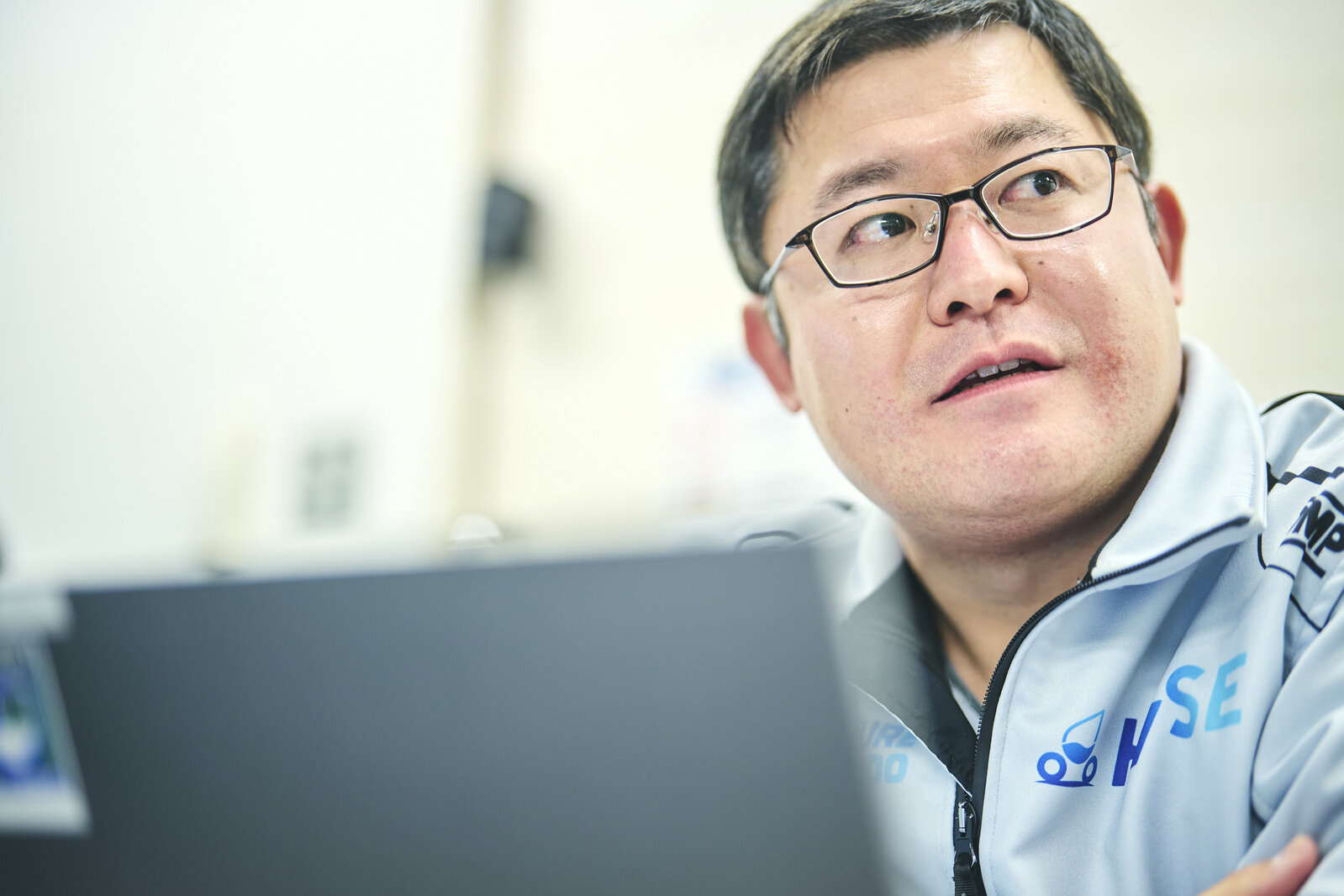
I came to realize that things I had been troubling over in my daily work were not really worth fretting about. I feel that I can now approach projects with a broader outlook.
Yuta Nambu (Toyota), who was mainly involved in parts management and logistics, also told us that he learned valuable lessons through dealing with unexpected setbacks.
Nambu
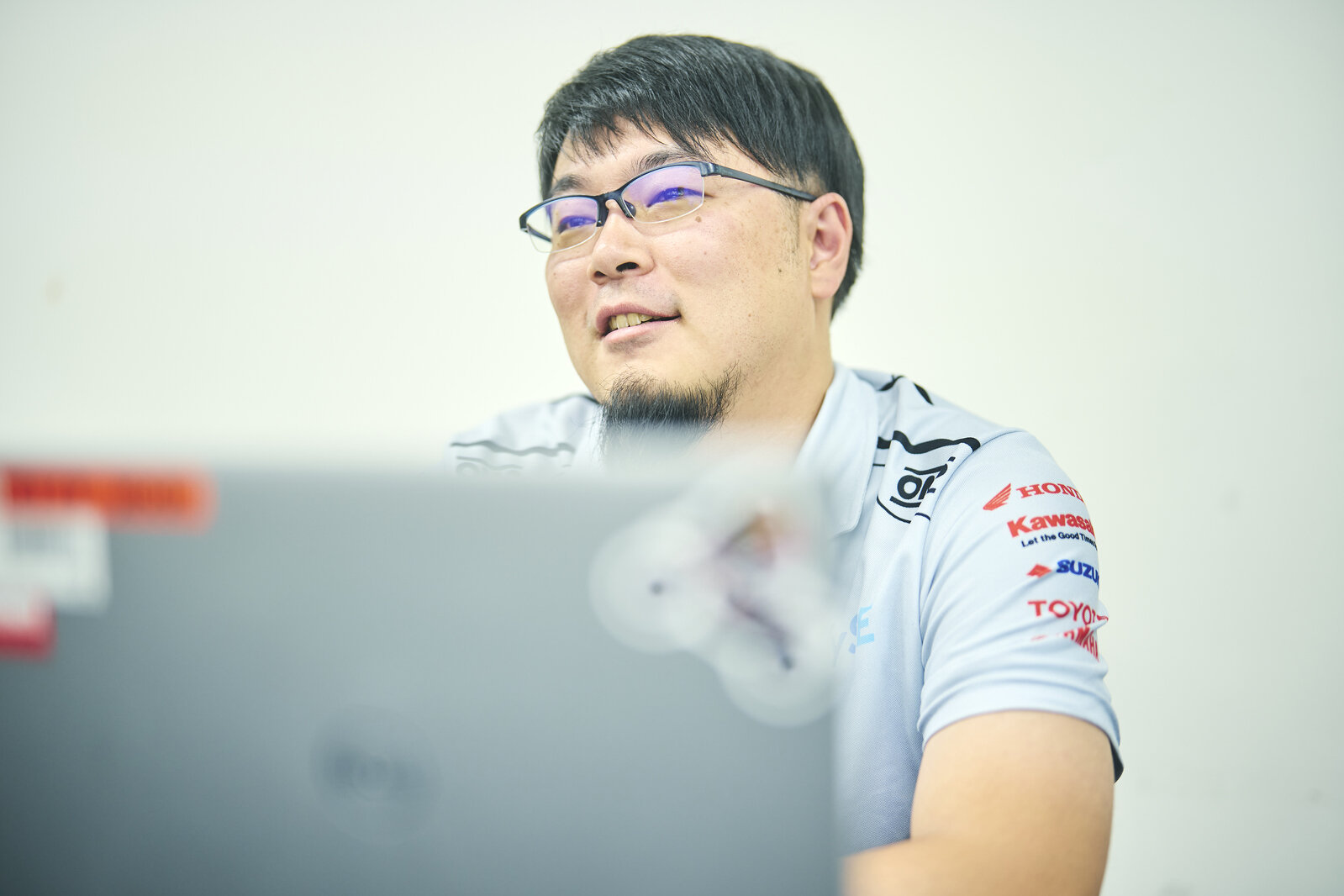
I realized that there will always be problems I cannot foresee, and that I need to have a broad mindset for dealing with troubles that you would never expect to happen.
Looking to the next challenge
With two years of Dakar under its belt, HySE is eyeing further technical advances. Project Leader Keita Nakanishi (Yamaha) chose his words carefully as he outlined the team’s future direction.
Project Leader Nakanishi
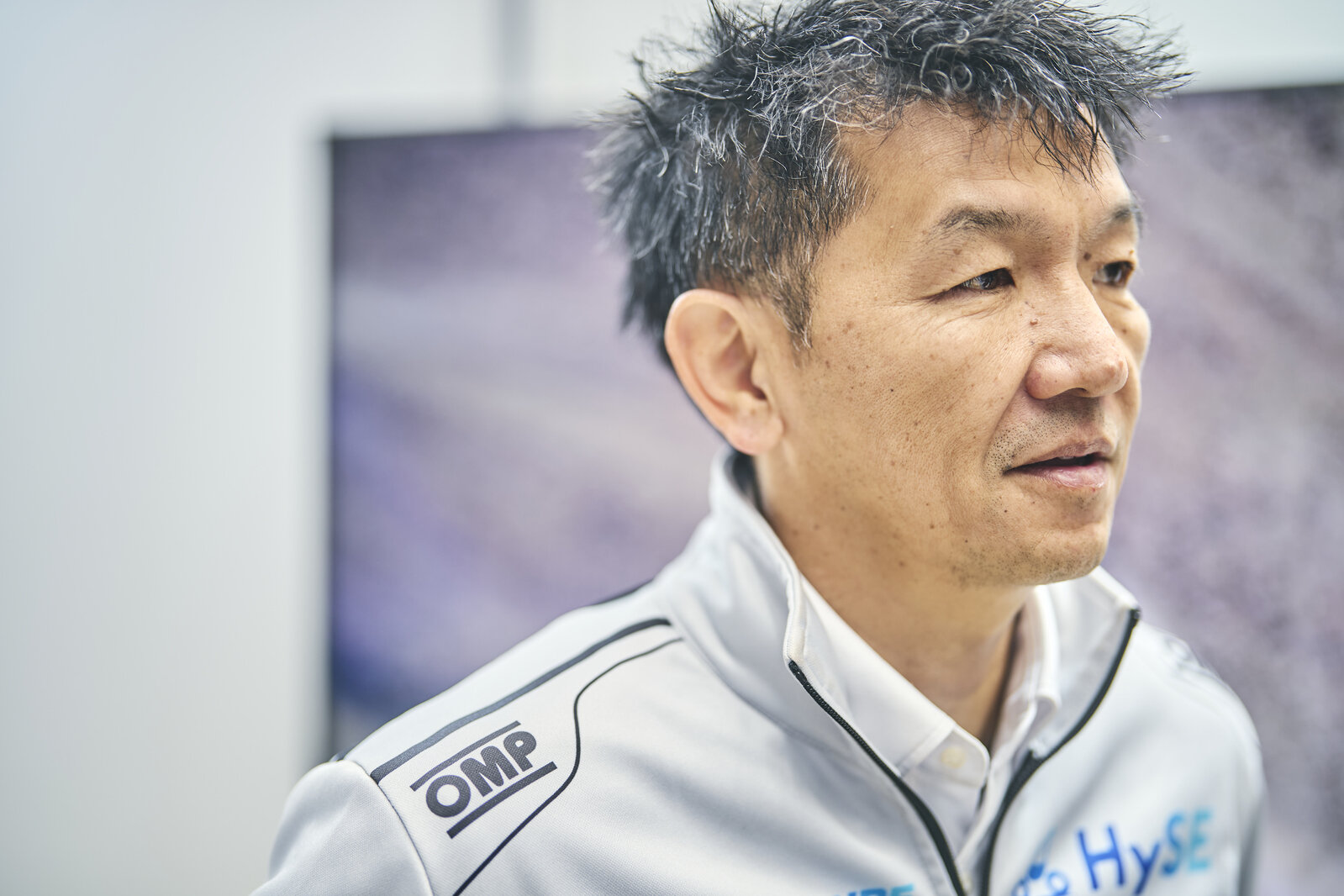
Within the team, opinions are divided between those who think we should continue competing in Dakar, and those who feel we should take the time to resolve our issues before racing again. In the latter case, we would work on a two-year plan to upgrade both hardware and software. Part of me wants to come back again next year, but I also want to take our time and make sure the issues are resolved before we return. It’s a tough call.
The power of inspiration
HySE’s Dakar Rally endeavor is the brainchild of Vice Chairman Yoshimoto Matsuda (Kawasaki Motors), who feels encouraged by the recent achievements.
Vice Chairman Matsuda
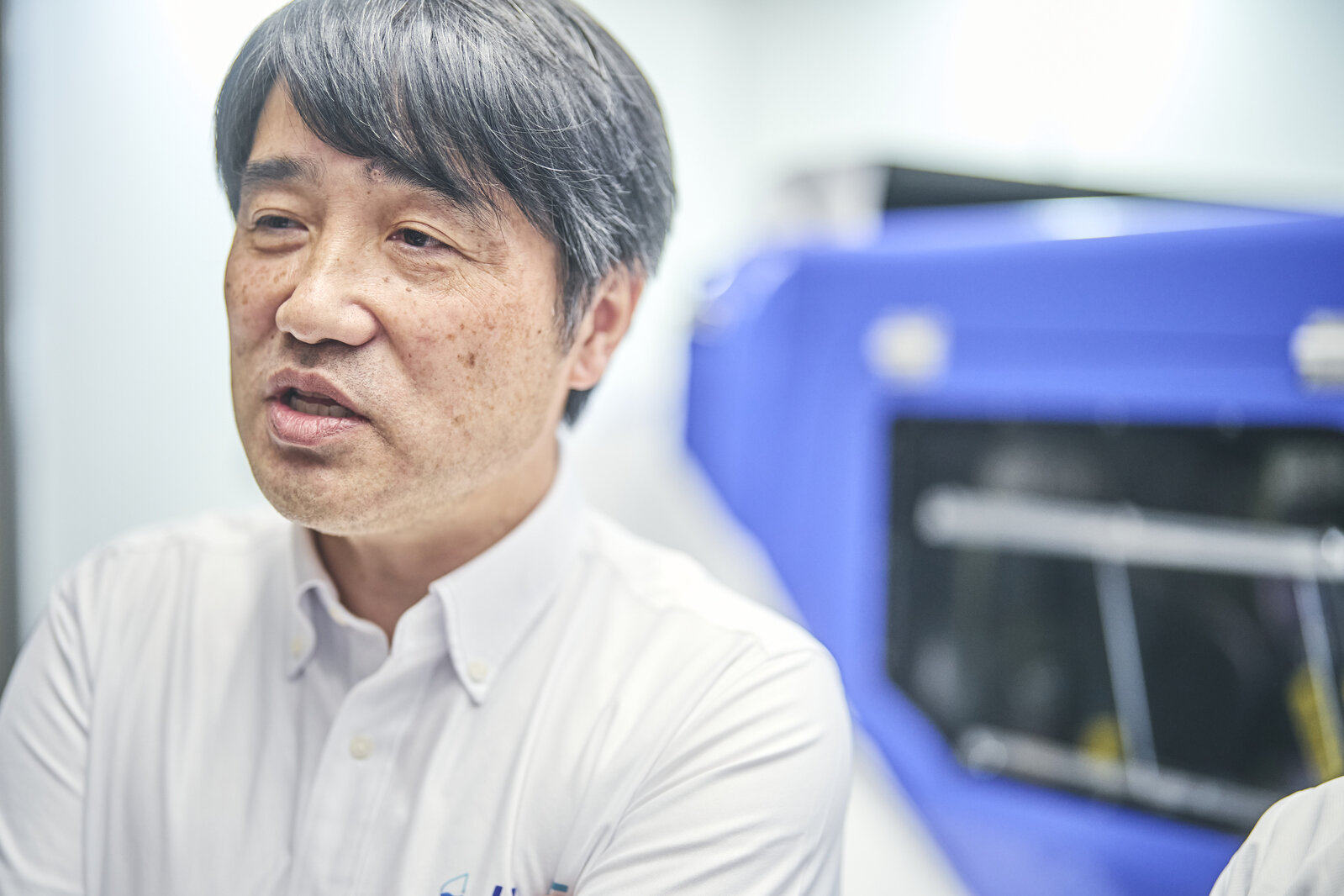
In this class, they have introduced something called “Fan Boost,” a system that awards points based on popularity votes. Thanks to a lot of interest from overseas, the HySE-X2 took first place.
As HySE’s profile rises and we attract more attention, the circle is steadily expanding around the world, with European and American manufacturers coming on board as supporting members. That is a major accomplishment for us.
As Vice Chairman Matsuda sees it, the HySE project’s essential value goes beyond developing technology.
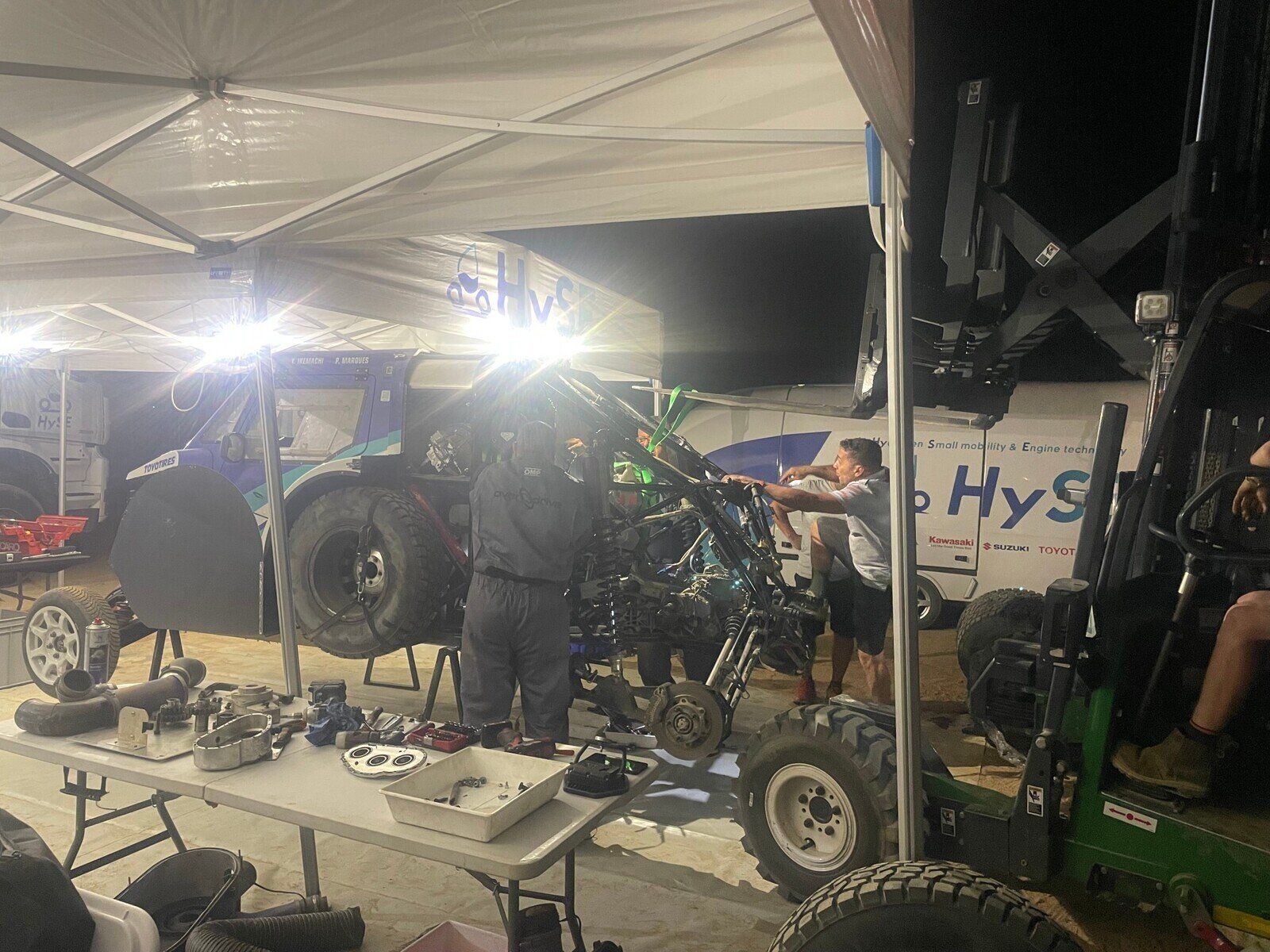
For the most part, engineers tend to operate within a corporate framework. That is why at HySE, we want to provide a platform where the power of engineering to create breakthroughs can be fully unleashed. I want young engineers to be moved and inspired. Genuine inspiration comes from experiencing frustration and hardship. Companies place an emphasis on risk management, but to innovate you also need the courage to take risks. I believe that such courage is what brought Toyota’s multi-pathway philosophy to the motorcycle industry.

For the future
At this year’s Dakar, the environmental side also took another step forward, with HySE using green hydrogen brought in from the United Arab Emirates. Deputy Project Leader Ichikawa underscored the significance of these efforts.
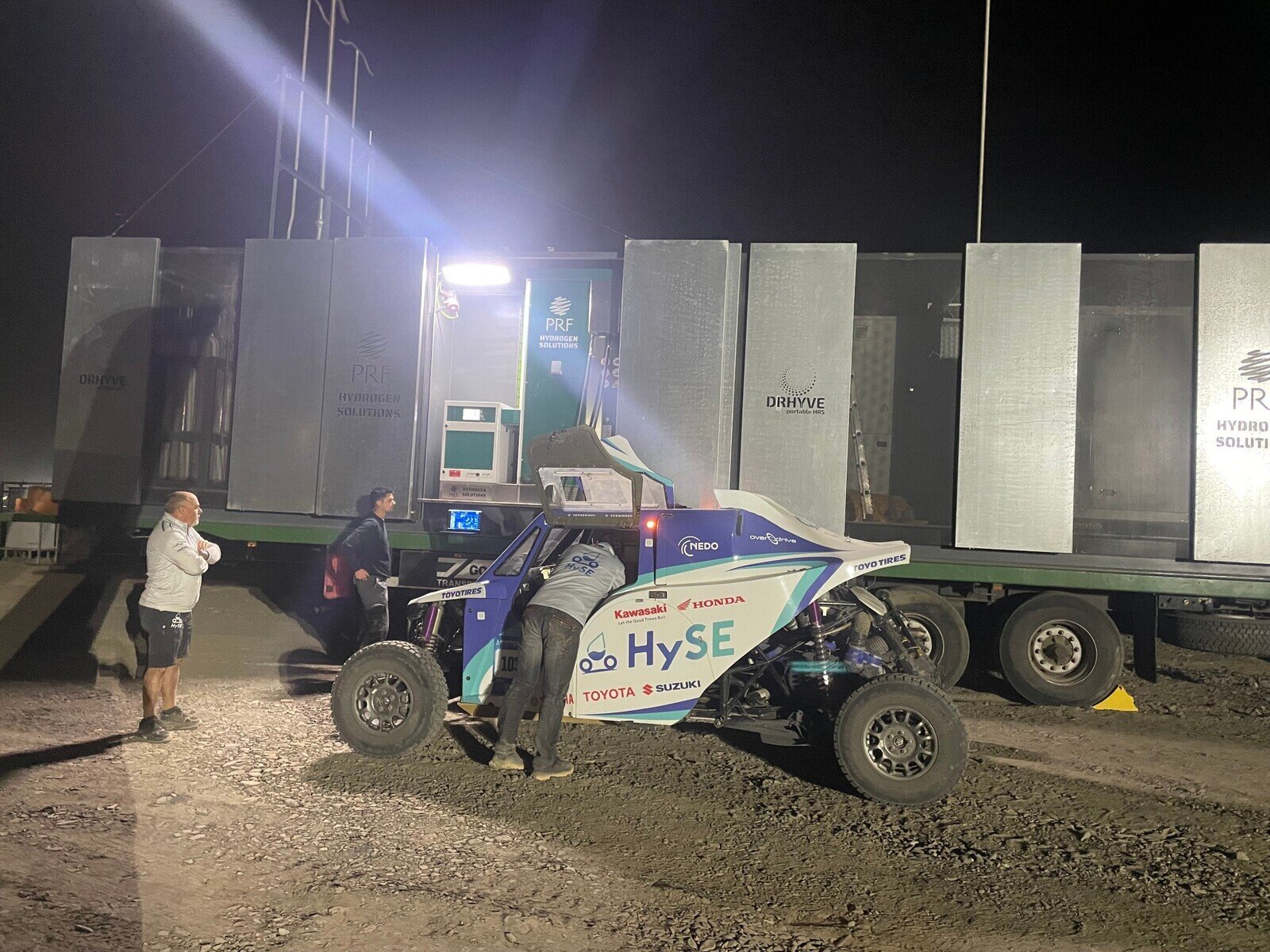
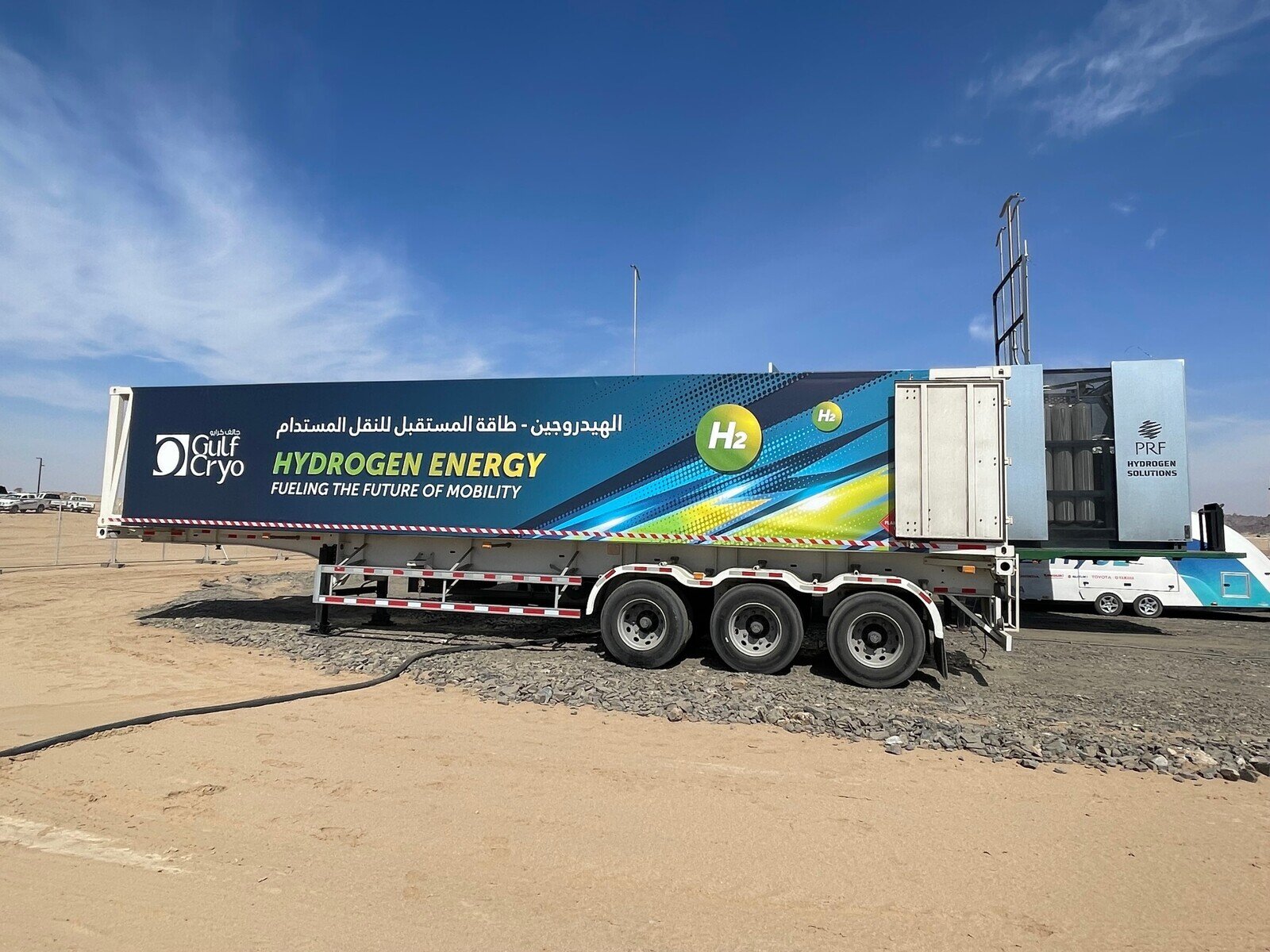
Deputy Project Leader Ichikawa
The hydrogen is made with energy generated by sunlight, further reducing the environmental impact. I view this as a sign that hopes for achieving a hydrogen society are steadily growing around the world.
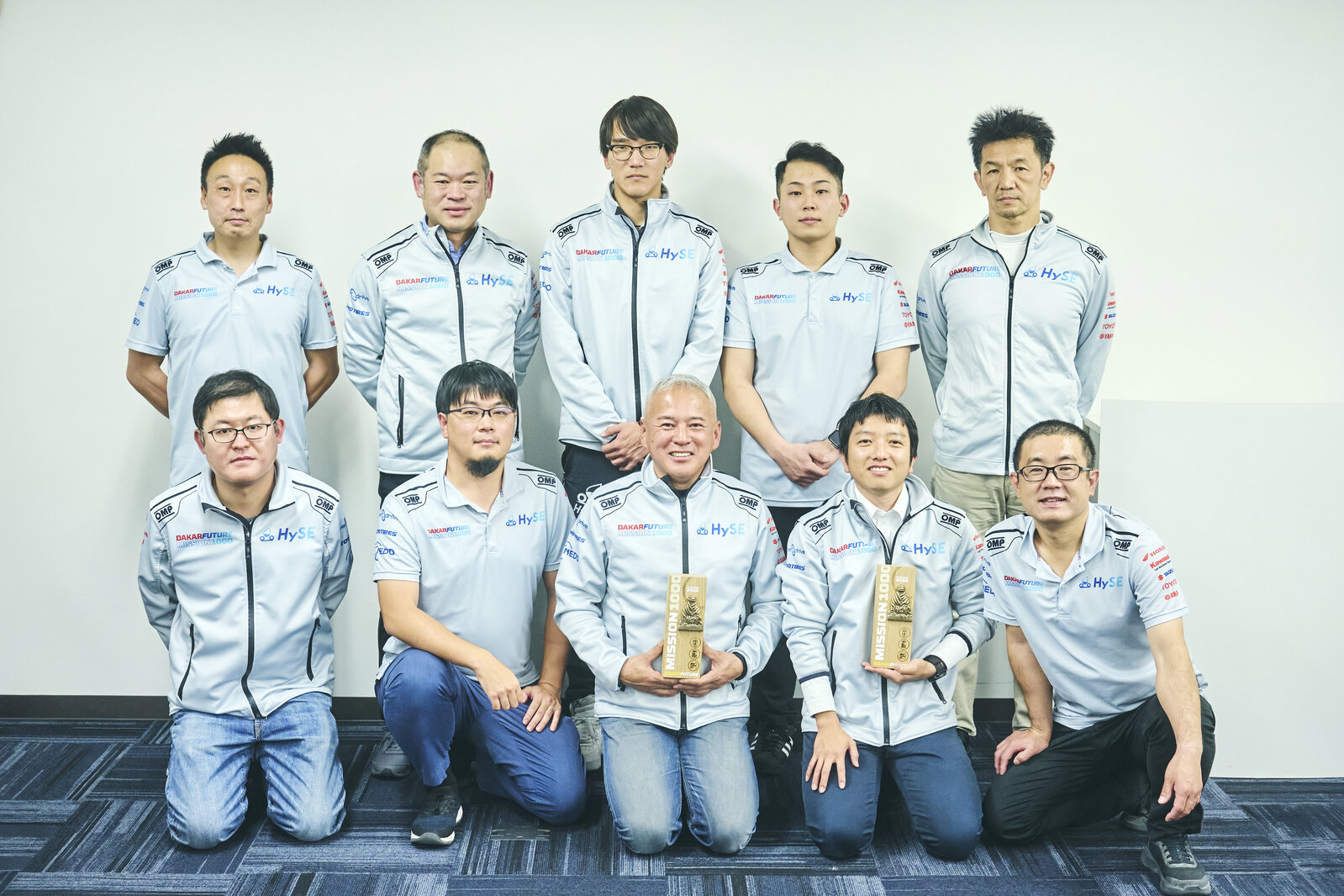
While working to solve the technical challenges, HySE plans to keep showcasing the potential of hydrogen engines on the world stage, including future Dakar rallies. Aside from enabling engineers to hone their skills and share their passions across company lines, HySE’s quest points the way to a new future for internal combustion engines—one which leads to the creation of a carbon-neutral society.

